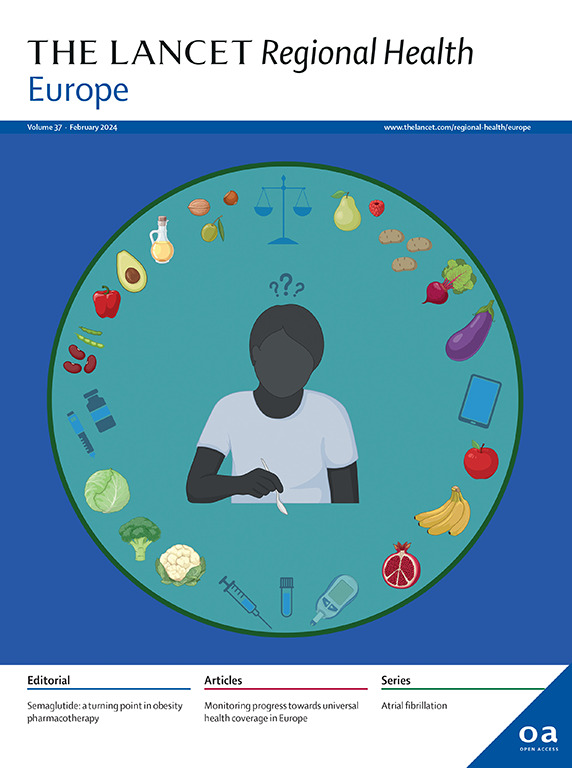英国二级和三级护理专业临床活动的碳排放:常规行政数据的探索性横断面分析
IF 13.6
Q1 HEALTH CARE SCIENCES & SERVICES
引用次数: 0
摘要
英国国家医疗服务体系(NHS)承诺到2045年实现净零碳排放。在这一过程中,一个关键的早期步骤是了解在哪里存在脱碳医疗保健的机会。本文的目的是探索利用现有的活动和排放强度数据来调查不同专业水平的临床活动的碳排放在英国NHS的二级和三级护理。方法:本研究是一项探索性的横断面分析,分析了英国国民健康保险制度中二级和三级保健的常规行政数据。我们纳入了2022/23财政年度英格兰所有入院患者的数据(包括门诊就诊,但不包括急诊就诊,但没有后续入院)。使用医院事件统计数据集和剧院生产力数据集。碳排放因子取自已公布的来源,并与活动量相关联,以量化临床活动水平的碳排放。研究结果分析了17,024,278例住院患者和101,973,593例门诊患者的数据。门诊就诊占测量的碳排放量的45%。其余55%与住院病人护理有关,其中急诊入院占45%(82%),住院病人选择性活动占7%,日间病例活动占3%。排名前20位的临床专业占碳排放量的79%,其中普通内科、创伤骨科和普通外科是碳排放量最高的三个专业。这些数据提供了对英国二级和三级医疗活动中特定元素的碳排放的深入了解。这种活动级(甚至更细粒度的程序级和患者途径级)分析需要为碳热点识别、干预开发和实施提供信息,以减少护理的碳排放。随着更细粒度的数据的出现(例如,关于药物使用的数据),这种估计将变得更加全面。本研究未获得任何公共、商业或非营利部门的资助机构的特别资助。本文章由计算机程序翻译,如有差异,请以英文原文为准。
Carbon emissions from clinical activities by speciality in secondary and tertiary care in England: an exploratory cross-sectional analysis of routine administrative data
Background
The National Health Service (NHS) in England has committed to achieving net zero carbon emissions by 2045. A key early step in this journey is to understand where opportunities to decarbonise healthcare exist. The aim of this paper is to explore the potential to use available activity and emissions intensity data to investigate the carbon emissions of different specialty-level clinical activities in secondary and tertiary care in the NHS in England.
Methods
This was an exploratory, cross-sectional analysis of routine administrative data from secondary and tertiary care in the NHS in England. We included data for all patients admitted to hospital (including outpatient attendances, but excluding emergency attendances without subsequent admission) in England during the financial year 2022/23. The Hospital Episodes Statistics dataset and Theatre Productivity Data Collection were used. Carbon emissions factors were taken from published sources and linked to activity volumes to quantify the carbon emissions at a clinical activity level.
Findings
Data for 17,024,278 hospital admissions and 101,973,593 outpatient attendances were analysed. Outpatient attendances accounted for 45% of the measured carbon emissions. Of the remaining 55% relating to admitted patient care, emergency admissions accounted for 45% (82% of admitted patient care), in-patient elective activity 7% and day case activity 3%. The top 20 clinical specialties accounted for 79% of the carbon emissions, with general internal medicine, trauma and orthopaedics and general surgery the three highest carbon emitting specialties.
Interpretation
These data provide insight into the carbon emissions of specific elements of secondary and tertiary care activity in England. Such activity-level (and even more granular procedure-level and patient pathway-level) analysis is needed to inform carbon hotspot identification, intervention development and implementation to reduce the carbon emissions of care. As more granular data become available (e.g., on pharmaceutical use), such estimates will become more comprehensive.
Funding
This research received no specific grant from any funding agency in the public, commercial, or not-for-profit sectors.
求助全文
通过发布文献求助,成功后即可免费获取论文全文。
去求助
来源期刊

Lancet Regional Health-Europe
Multiple-
CiteScore
19.90
自引率
1.40%
发文量
260
审稿时长
9 weeks
期刊介绍:
The Lancet Regional Health – Europe, a gold open access journal, is part of The Lancet's global effort to promote healthcare quality and accessibility worldwide. It focuses on advancing clinical practice and health policy in the European region to enhance health outcomes. The journal publishes high-quality original research advocating changes in clinical practice and health policy. It also includes reviews, commentaries, and opinion pieces on regional health topics, such as infection and disease prevention, healthy aging, and reducing health disparities.
 求助内容:
求助内容: 应助结果提醒方式:
应助结果提醒方式:


